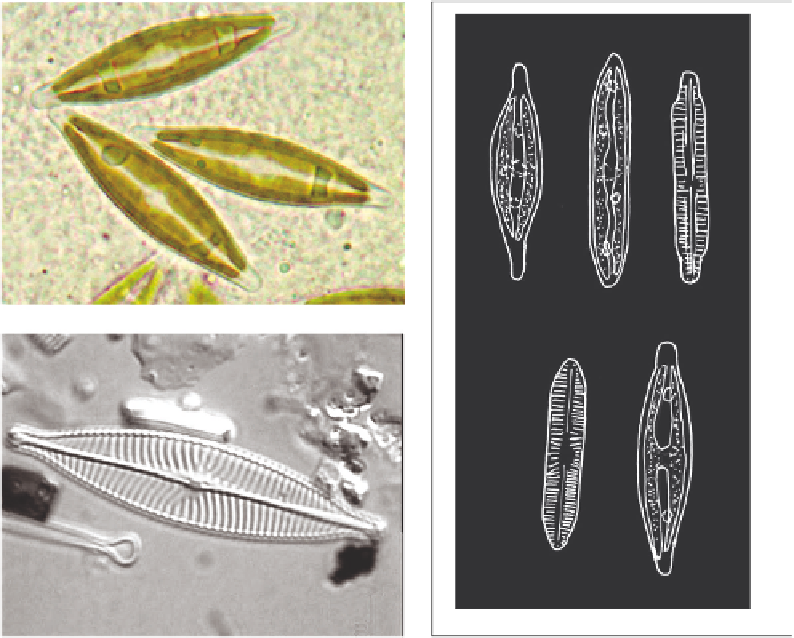Environmental Engineering Reference
In-Depth Information
10 μm
1
2
3a
3b
4
10 μm
(a)
(b)
Figure 4.73
(a)
Navicula.
Top: Group of live cells, each with two elongate olive-brown chloroplasts. Bottom: Valve
view of diatom frustule, showing striae radiating out from a central area. Acid digest, lake sediment sample. Reproduced
with permission from M. Capstick. (b) Species of
Navicula
with two plate-like chloroplasts (1-3) or an 'H'-shaped
chloroplast (4). 1.
N. rhynchocephala.
2.
N. tripunctata.
3a,b.
N. bryophila.
4.
N. subtilissima.
be present. Widespread in lakes, ditches
and ponds. Typically planktonic in harder
nutrient-rich waters, though some species
occur in softer waters. Chlorophyta.
Plate XXVIII.
(b) Cells without a median groove around
theentirecell......................
211
211
(210) (a) Cells angular, 4-5 sided, with angles
rounded and tipped with a short spine.
One side of the cell with a deep groove
but not extending around the whole cell
...........................
Tetraedron
210
(204) (a) Cells have a distinct median groove
or isthmus around the whole-cell central
region. Sometimes the two sides of the
groove are quite close together, so care
must be taken with the observation (see
Figs 4.76-4.77). . ..................
215
Tetraedron
cells (8-22 μm diameter) are
pentagonal in shape, and contain one
(usually) to many chloroplasts, usually



Search WWH ::

Custom Search